Abstract
The infection by mucosal human papillomavirus (HPV) is causally associated with tumor development in cervix and oropharynx. The mechanisms responsible for this oncogenic potential are mainly due to the product activities of two early viral oncogenes: E6 and E7. Although a large number of cellular targets have been described for both oncoproteins, the interaction with tumor suppressors p53 and retinoblastoma protein (pRb) emerged as the key functional activities. E6 degrades tumor suppressor p53, thus inhibiting p53-dependent functions, whereas E7 binds and degrades pRb, allowing the transcription of E2F-dependent genes. Since these two tumor suppressors exert their actions through transcriptional modulation, functional genomics has provided a large body of data that reflects the altered gene expression of HPVinfected cells or tissues. Here we will review the similarities and differences of these findings, and we also compare them with those obtained with transgenic mouse models bearing the deletion of some of the viral oncogene targets. The comparative analysis supports molecular evidences about the role of oncogenes E6 and E7 in the interference with the mentioned cellular functions, and also suggests that the mentioned transgenic mice can be used as models for HPV-associated diseases such as human cervical, oropharynx, and skin carcinomas.
Keywords: Human papillomavirus, E6, E7, cervical cancer, oropharyngeal cancer, gene expression profiling, pRb, p53
Current Genomics
Title: Molecular Signature of HPV-Induced Carcinogenesis: pRb, p53 and Gene Expression Profiling
Volume: 10 Issue: 1
Author(s): Agueda Buitrago-Perez, Guillermo Garaulet, Ana Vazquez-Carballo, Jesus M. Paramio and Ramon Garcia-Escudero
Affiliation:
Keywords: Human papillomavirus, E6, E7, cervical cancer, oropharyngeal cancer, gene expression profiling, pRb, p53
Abstract: The infection by mucosal human papillomavirus (HPV) is causally associated with tumor development in cervix and oropharynx. The mechanisms responsible for this oncogenic potential are mainly due to the product activities of two early viral oncogenes: E6 and E7. Although a large number of cellular targets have been described for both oncoproteins, the interaction with tumor suppressors p53 and retinoblastoma protein (pRb) emerged as the key functional activities. E6 degrades tumor suppressor p53, thus inhibiting p53-dependent functions, whereas E7 binds and degrades pRb, allowing the transcription of E2F-dependent genes. Since these two tumor suppressors exert their actions through transcriptional modulation, functional genomics has provided a large body of data that reflects the altered gene expression of HPVinfected cells or tissues. Here we will review the similarities and differences of these findings, and we also compare them with those obtained with transgenic mouse models bearing the deletion of some of the viral oncogene targets. The comparative analysis supports molecular evidences about the role of oncogenes E6 and E7 in the interference with the mentioned cellular functions, and also suggests that the mentioned transgenic mice can be used as models for HPV-associated diseases such as human cervical, oropharynx, and skin carcinomas.
Export Options
About this article
Cite this article as:
Buitrago-Perez Agueda, Garaulet Guillermo, Vazquez-Carballo Ana, Paramio M. Jesus and Garcia-Escudero Ramon, Molecular Signature of HPV-Induced Carcinogenesis: pRb, p53 and Gene Expression Profiling, Current Genomics 2009; 10 (1) . https://dx.doi.org/10.2174/138920209787581235
| DOI https://dx.doi.org/10.2174/138920209787581235 |
Print ISSN 1389-2029 |
| Publisher Name Bentham Science Publisher |
Online ISSN 1875-5488 |
Call for Papers in Thematic Issues
Current Genomics in Cardiovascular Research
Cardiovascular diseases are the main cause of death in the world, in recent years we have had important advances in the interaction between cardiovascular disease and genomics. In this Research Topic, we intend for researchers to present their results with a focus on basic, translational and clinical investigations associated with ...read more
Deep learning in Single Cell Analysis
The field of biology is undergoing a revolution in our ability to study individual cells at the molecular level, and to integrate data from multiple sources and modalities. This has been made possible by advances in technologies for single-cell sequencing, multi-omics profiling, spatial transcriptomics, and high-throughput imaging, as well as ...read more
New insights on Pediatric Tumors and Associated Cancer Predisposition Syndromes
Because of the broad spectrum of children cancer susceptibility, the diagnosis of cancer risk syndromes in children is rarely used in direct cancer treatment. The field of pediatric cancer genetics and genomics will only continue to expand as a result of increasing use of genetic testing tools. It's possible that ...read more
Related Journals
 17
17
- Author Guidelines
- Graphical Abstracts
- Fabricating and Stating False Information
- Research Misconduct
- Post Publication Discussions and Corrections
- Publishing Ethics and Rectitude
- Increase Visibility of Your Article
- Archiving Policies
- Peer Review Workflow
- Order Your Article Before Print
- Promote Your Article
- Manuscript Transfer Facility
- Editorial Policies
- Allegations from Whistleblowers
- Announcements
Related Articles
-
Podocyte Mitosis – A Catastrophe
Current Molecular Medicine Molecular Advances Toward the Understanding of the Patho-Biology of Idiopathic Myelofibrosis
Current Immunology Reviews (Discontinued) Chemoprevention of Colorectal Carcinogenesis by Natural Anti-Inflammatory Agents
Anti-Inflammatory & Anti-Allergy Agents in Medicinal Chemistry Tumor-Targeted Inhibition by a Novel Strategy - Mimoretrovirus Expressing siRNA Targeting the Pokemon Gene
Current Cancer Drug Targets Differential Expression of miR-20a and miR-145 in Colorectal Tumors as Potential Location-specific miRNAs
MicroRNA Bortezomib Targets the Caspase-Like Proteasome Activity in Cervical Cancer Cells, Triggering Apoptosis That Can be Enhanced by Nelfinavir
Current Cancer Drug Targets TGFß, a Potent Regulator of Tumor Microenvironment and Host Immune Response, Implication for Therapy
Current Molecular Medicine Regulators of the G1 Phase of the Cell Cycle and Neurogenesis
Central Nervous System Agents in Medicinal Chemistry Naphthoflavones as Antiproliferative Agents: Design, Synthesis and Biological Evaluation
Anti-Cancer Agents in Medicinal Chemistry Recent Patents on Melanoma with Focus on Genetic Strategies
Recent Patents on Anti-Infective Drug Discovery Luminescent Silica Nanoparticles for Cancer Diagnosis
Current Medicinal Chemistry TGF-β1 Signalling, Connecting Aberrant Inflammation and Colorectal Tumorigenesis
Current Pharmaceutical Design The Brain, the Penis and Steroid Hormones: Clinical Correlates with Endothelial Dysfunction
Current Pharmaceutical Design The Potential for Substance P Antagonists as Anti-Cancer Agents in Brain Tumours
Recent Patents on CNS Drug Discovery (Discontinued) Perspectives of Protein Kinase C (PKC) Inhibitors as Anti-Cancer Agents
Mini-Reviews in Medicinal Chemistry Targeted Therapies for Autosomal Dominant Polycystic Kidney Disease
Current Medicinal Chemistry IP6 & Inositol in Cancer Prevention and Therapy
Current Cancer Therapy Reviews Voltage Gated Calcium Channels as Targets for Analgesics
Current Topics in Medicinal Chemistry Advances in the Pharmacologic Treatment of Hepatocellular Carcinoma
Current Clinical Pharmacology MDM4 (MDMX) and its Transcript Variants
Current Genomics












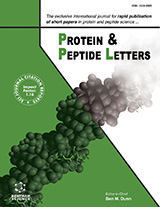
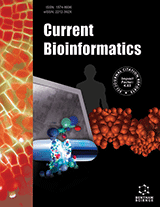
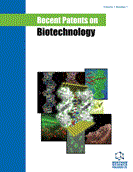
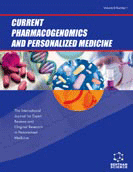
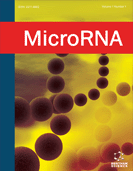
.jpeg)








